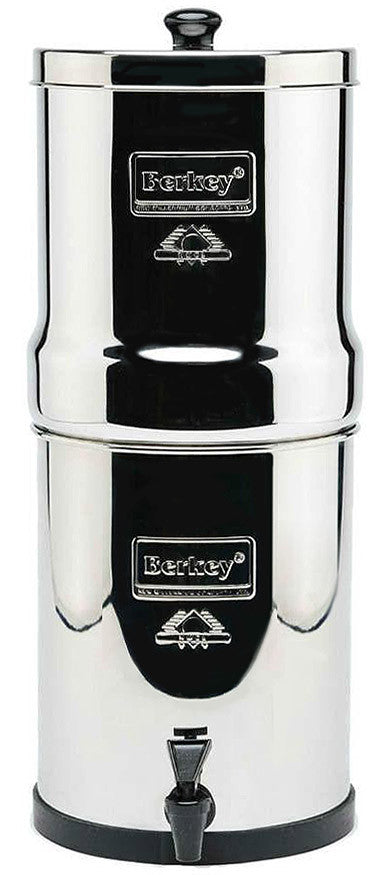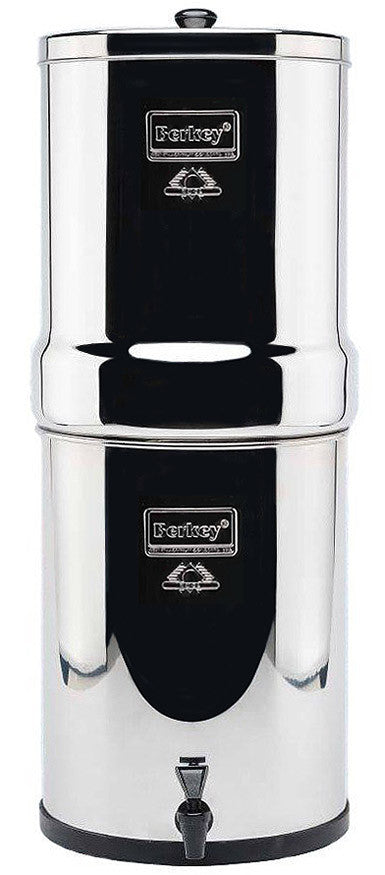
THMs are chemicals formed in water along with other disinfection by-products. They include chloroform, dibromochloromethane, bromodichloromethane, and bromoform.
THMs are formed when chlorine and other disinfectants react naturally with the inorganic and organic matter in the water.
The United States Environmental Protection Agency (US EPA) has created the Stage 1 Disinfectant and Disinfection By-products Rule to regulate THMs at a maximum annual average of 80 parts per billion.
Some of the main health concerns of THM exposure in drinking water are injury to the kidneys and liver, increased risk of the bladder, and malfunction of the central nervous system.
Thus, this article will discuss how to minimize THMs in drinking water and address the standards and initiatives the authorities have established to make drinking water safe for consumption.
The Rate of the THMs in the Water Supplies
Various studies have been conducted since the 1970s to check the presence of THMs in drinking water. A recent study by the US EPA confirmed the presence and dangers of THMs in the water.
It forms when chlorine-based disinfectants react with the organic materials in untreated water supplies.
In general, organic contaminants come from the natural materials in the environment. Examples are from the leaves, decaying plants, and other dead materials at the surface level of the water.
Such organic material is usually discussed and measured as total organic carbon (TOC). The THMs formed are usually related to the amount of TOC plus the disinfectant used.
Some reactions that form THMs during the treatment, distribution, and storage within the drinking water systems are influenced by time, pH level, and temperature.
Testing, Reporting, and the Exposure Routes for the THMs
In 1979, the US EPA required the public water systems serving around 10,000 clients to test their water. The water must be examined, and reports on THM levels must be published.

The initial limit adopted by the EPA was 0.1 parts per million (ppm) total combined THMs.
Meanwhile, in 2001, the EPA adopted a more protective maximum contaminant level (MCL), which applies to all community sizes and non-transient water systems with a total combined THM of 0.08 ppm.
Also, the US EPA has adopted the regulatory goals (MCLGs) for bromodichloromethane (zero) for bromoform (zero) and dibromochloromethane 0.06 ppm.
Chloroform must be included in the total THM concentrations. However, this time, the MCLG or the MCL must not be included anymore.
The main routes of exposure to the THMs in the drinking water are through the water itself. The studies found that the major exposure route can be linked to bathing, showering, cleaning the house, washing clothes, and cleaning the dishes.
Exposure of People from THMs to Drinking Water
People can be exposed to THMs when they drink water contaminated by such compounds and shower, bathe, or engage in other activities that expose their bodies to contaminants.
The THMs can evaporate from the tap, and the user can inhale them whenever they shower. Also, the skin can absorb it whenever they take a bath.
As such, the authorities have considered these routes of exposure in crafting the guidelines. As long as the water meets the total THMs levels, it is considered safe for domestic uses: bathing, drinking, food preparation, house cleaning, etc.
Potential Complications of High THM Levels in the Drinking Water
Indeed, the four by-products of chlorination are considered to belong to Cancer Group B carcinogens. According to studies, these can cause cancer among laboratory animals.

Today, trihalomethane or chloroform is the most common in most water systems. Meanwhile, dibromochloromethane can cause the most serious cancer cases, followed by bromoform and chloroform.
While the THMs can contribute to the birth outcome, various factors can also be involved. Pregnant mothers must be aware of the THM level in their water and take precautionary steps to reduce it.
The laws in the United States currently limit the concentrations of the said chemicals to 80 ug/l.
Health Risks
THM exposure's main health concern is an injury to the kidneys and liver, increased risk of the bladder, and malfunction of the central nervous system.
Nowadays, more studies show the association between THM exposure plus various reproductive issues. Examples are fertility, gestational and menstrual disorders, stillbirth, miscarriage, and even congenital disabilities.
Also, THMs are one of the main causes of cancer due to their possibility of producing human carcinogens.
The USA EPA estimates that 3-4 cancer cases can occur among every 10,000 people. This is true for people who consume 2 liters of water containing only 0.1 ppm of chloroform daily for 70 years.
Some studies use a shorter period as an example. This is because it is uncommon for a person to use the same water supply for a lifetime.
It is not true that inhaling THMs is less dangerous than ingesting the same amounts.
THMs Regulations
The US EPA is considering an all-encompassing revision of the disinfection by-products (DBPs) regulations. The THMs limit can be lowered to 80 ug/l, and three more categories of DBPs can be added.
This standard can now replace the current standard, set to a maximum allowable level per year of 100 parts per billion for large surface water public systems.
Haloacetic acids
Haloacetic acids are just like THMs, and they are the byproducts of chlorination. Examples are dibromoacetic acid, monobromoacetic acid, monochloroacetic acid, trichloroacetic acid, and dichloroacetic acid. It is expected to have 60 ug/L of MCL for total haloacetic acid. If there are excessive amounts of haloacetic acids, it can cause liver and nervous system malfunctions.
Chlorite
Chlorite must be regulated to an MCL of one mg. Excessive amounts of it can cause hemolytic anemia.
Bromate
Bromate is another regulated DBP that is limited to the systems using ozone. It is expected to be at a level of only ten ug/l. An excessive level can lead to hearing, kidney, and gastrointestinal effects.
Hypochlorites
Another method of avoiding THMs in the water is to use something other than gas or hypochlorites as disinfectants. Some possible disinfectants are chlorine dioxide, chloramines, UV light, and ozone. However, these can also produce harmful by-products.
Removal of the THMs in the Water
THM levels increase with time, temperature, pH, and the level of the precursors available. Precursors are organic materials that react with chlorine to produce THMs.
One way to reduce the level of THM is to decrease the precursors and chlorination in the filters.
Indeed, filtration involves many precursors. As such, it is best to reduce them as the chlorine comes into contact with the water.
Alternative disinfectants like peroxide and potassium permanganate can be considered if they require oxidation before filtration.
However, this is not the only option if prechlorination is needed to achieve the desired CT values.
Removal of Precursors: Enhanced Coagulation
According to the EPA, the best available technology for controlling the THM at the treatment plants is removing the precursors through enhanced coagulation.
Enhanced coagulation optimizes the filtration process to maximize the elimination of the precursors. The removal is improved by reducing the pH level to as low as 4 to 5, increasing the coagulant's feed rates, and using ferric coagulants instead of alum.
Carbon Filter
One of the easiest ways to eliminate the THMs in water is through activated carbon or charcoal. You can also try this on a water pitcher with a carbon filter. Interested homeowners can install carbon filters in their tap water or add them to their bottled water.
Check that the bottled water supplier is an International Bottled Water Association member to ensure safety.
One can use the activated carbon in the whole house water filtration system. Also, it can be used as a backwashing system that does not require changing the cartridge regularly.
When using a water filter, ensure it is certified to remove THMs. Then, follow the manufacturer's recommendations for replacing it.
Reverse Osmosis Systems
Indeed, a reverse osmosis water filtration system can do an excellent job removing the THMs in the water.
Reverse osmosis removes dissolved inorganic solids, such as salts, from water. This is possible because household water pressure pushes tap water through a semipermeable membrane.
Studies have shown reverse osmosis systems can remove lead, THMs, fluoride, chlorine, chloramine, pesticides, and detergents.
Household water pressure filters out impurities by pushing water through the reverse osmosis system membrane and other filters. Then, the water is flushed down the drain.
After that, it can produce clean and good-tasting drinking water.
Water Softeners
Water softeners are innovative devices that can help remove THMs from drinking water.
The water softeners can effectively remove the magnesium, calcium, and other metals in the hard water. Then, it will result in soft water requiring less soap for the same cleaning effort. As such, soap will not be wasted when the calcium ions are mopped up.
Soft water can also extend the lifetime of the plumbs by eliminating or reducing the buildup of scale in the fittings or pipes. Water softening can be achieved using ion-exchange resins or the lime softening technique.
UV Systems
Ultraviolet or UV water purification is an energy found in the electromagnetic spectrum. It lies between the visible light and the x-ray.
Though UV rays or light cannot be seen with the naked eye, we are exposed to them each time we step outside in the sun's heat. UV light can be the main cause of sunburn.
UV water purification systems use special lamps that emit UV light of a particular wavelength, which can disrupt the DNA of microorganisms.
UV light waves are also called the Germicidal Spectrum or frequency. As water passes through a UV water treatment system, living organisms are exposed to UV light, which attacks their genetic code.
The light rearranges the DNA or RNA, eliminating the microorganism’s ability to reproduce and function properly. As such, it cannot infect or even contact other organisms.
This process can be simple yet very effective. It can destroy 99.9% of harmful microorganisms without adding chemicals to the water.
Berkey Water Filtration System
According to Laboratory tests, Berkey products can reduce Trihalomethane (THMs) by up to 99.8%.
Black Berkey® Elements dramatically reduce trihalomethanes, inorganic minerals, heavy metals, pharmaceuticals, pesticides, VOCs, petroleum products, perfluorinated chemicals, rust, silt, sediment, radiological, and more.
The Berkey Water Filter has seven products; you can choose any unit based on your needs.
Travel Berkey Water Filter

Travelers who are always on the go can have the Travel Berkey Water Filter. This compacted system is excellent for on-the-go activities and emergencies.
It has a storage capacity of 1.5 gallons and is perfect for small homes. Furthermore, it can serve 1 to 3 people for everyday use.
Berkey Light Water Filter

Consider the Berkey Light Water Filter as a lightweight water filter alternative. It is affordable and more portable than its stainless steel counterpart.
The Berkey Light Water Filter is made from a non-BPA/BPS co-polyester that does not leach into the water.
Furthermore, it has a capacity of 2.75 gallons or 10.4 liters of water. In regular use, it can already serve around 1 to 5 people.
Conclusion
In a nutshell, there are various methodologies to remove THMs in drinking water since they pose various health risks to people.
Researchers continue to study THMs and other disinfection byproducts to discover methods for minimizing and eliminating them from drinking water.
Technology and drinking water regulations will change as more information becomes available in the coming years.
← Older Post Newer Post →





